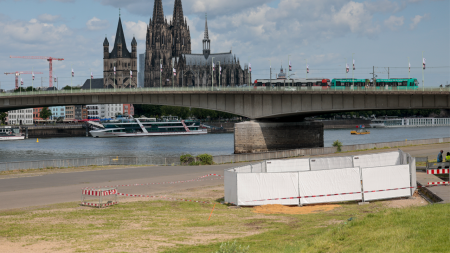The sustained presence of a U.S. RC-135S Cobra Ball missile-tracking aircraft over the waters between Japan and South Korea for eight consecutive days has sparked speculation and raised concerns about the escalating tensions on the Korean Peninsula. The Cobra Ball, specifically designed to collect optical and electronic data on ballistic missiles, is typically deployed to monitor North Korean missile activity. While North Korea hadn’t conducted any missile tests during the period of observation, the continuous flights coincided with South Korean President Yoon Suk Yeol’s controversial attempt to impose martial law, which ultimately led to his impeachment. This confluence of events has fueled speculation about the true purpose of the Cobra Ball’s extended mission.
One possible explanation for the sustained flights centers on North Korea’s continued missile development and potential launch preparations. Open-source intelligence analysts noted the unusual deployment of two Cobra Ball aircraft from Kadena Air Base in Okinawa to the Sea of Japan, coinciding with a suspected North Korean launch window. This heightened surveillance suggests the U.S. may have received intelligence indicating an imminent missile test, particularly one involving newer, larger missiles that North Korea has been developing. The need to collect comprehensive data on these advanced missile systems would justify the continuous presence of the Cobra Ball.
Adding to the intrigue, South Korean media reports suggested an alternative theory: that the Cobra Ball flights were intended to monitor the South Korean military itself. Experts cited the aircraft’s ability to track not only missile launches but also the locations of rocket launchers and artillery fire, raising the possibility that the U.S. was monitoring South Korean military activities in the wake of the attempted imposition of martial law. Reports mentioned unconfirmed intelligence about potential internal conflict within the South Korean military, particularly among a faction closely associated with President Yoon, further fueling speculation about internal instability and the need for U.S. surveillance.
However, open-source intelligence analysts have disputed this theory, emphasizing that the continuous Cobra Ball flights are more likely related to anticipated North Korean missile activity. They argue that there’s no logical reason for the U.S. to surveil South Korea in this manner and that satellite intelligence would provide more effective monitoring if such surveillance were necessary. The timing of the flights, coinciding with a potential North Korean launch window, strongly suggests that North Korea remains the primary focus of the U.S. surveillance efforts.
Despite the uncertainty surrounding the specific purpose of the Cobra Ball flights, the ongoing tensions on the Korean Peninsula are undeniable. North Korea’s continued development of advanced missile systems poses a significant threat to regional stability, and the political turmoil in South Korea adds another layer of complexity. The sustained presence of the Cobra Ball underscores the U.S. commitment to monitoring the situation closely and gathering crucial intelligence to inform its response to potential threats. Furthermore, the upcoming transition to a new U.S. presidential administration adds another dimension to the situation.
The inauguration of President-elect Donald Trump in January 2025 further complicates the geopolitical landscape. North Korea has historically used missile launches and other provocative actions to signal its intentions to new U.S. administrations. The extended deployment of the Cobra Ball could be viewed as a proactive measure to deter such actions or to ensure that the U.S. has the necessary intelligence to respond effectively if North Korea chooses to escalate tensions during this period of transition. The sustained surveillance highlights the volatile nature of the situation and the ongoing need for vigilance in the region. The U.S. is clearly prioritizing the collection of intelligence in anticipation of potential North Korean actions aimed at testing the resolve of the incoming administration.










